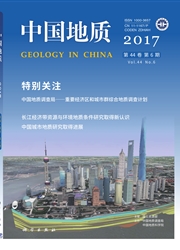

 中文摘要:
中文摘要:
根据地震震源机制、断层参数结果,结合GPS测定的同震位移场与构造研究的最新结果,综合分析研究了2008年汶川8级大地震汶川地震发生的地震活动背景、震源应力场、断层构造运动特征及其动力学机制。地震活动性分析研究结果表明,2008年汶川8级大地震是在青藏高原与其周边地域构造运动剧烈,2001年起始的地震活动高潮期的背景下发生的。其长达300km的地震震源断层填补了青藏高原东缘1900年以来存在的8级地震活动的空区。震源机制与区域应力场特征及其动力学机制研究表明,汶川8级地震震源处于南北地震带中南段东部,青藏高原东向扩张与四川盆地的抵抗是该区构造运动的主要特征。汶川地震及其强余震是在一个稳定的、主压应力P轴以北西西-东南东方向为主的震源应力场控制下发生的。说明汶川地震震源区域主要受到四川盆地、华南块体区域应力场的控制并发震的。龙门山断裂带西侧的青藏高原相对于四川盆地发生的东向上升;而东侧的四川盆地相对于青藏高原发生的西向下降构造运动是2008年汶川8级地震发生的主要地震成因即地震发生机制。
 英文摘要:
英文摘要:
In this study,seismicity background,stress fields,seismogenic tectonics and dynamics for the 2008 Wenchuan M8 Earthquake were investigated employing earthquake focal mechanisms,source fault parameters and coseismic displacements from GPS.The results suggest that the 2008 Wenchuan M8 event occurred under the tectonical motion in and around the Qinghai-Tibet plateau during a seismically active period since 2001.The Wenchuan M8 event with the 300 km long earthquake fault occurred on the eastern edge of the Qinghai-Tibet plateau,which filled the seismicity gap zone lacking M8 event from 1990.The eastward extensional motions of the Tibetan plateau and the counter action constitute the main tectonic property.The M8 Wenchuan event and its strong aftershocks occurred under a seismogenic stress field where P-axes align stably in NWW-SEE direction.It implies that the seismogenic stress field for the Wenchuan M8 event is mainly attributable to the actions of the stress fields lying on the southern segment of NSSB,the Shichuan basin and the South China block.The results from the source fault parameters and coseismic displacements from GPS suggest that the tectonic movement of the up-eastward slip of the Qinghai-Tibet plateau on the western side of the Longmen Mountain and the relative down-westward slip of the Sichuan basin might have been the causative mechanism of the 2008 Wenchuan M8 event.
 同期刊论文项目
同期刊论文项目
 同项目期刊论文
同项目期刊论文
 Xu Jiren Zhao Zhixin, Normal Faulting Type Earthquake Activities in the Tibetan Plateau and Its Tect
Xu Jiren Zhao Zhixin, Normal Faulting Type Earthquake Activities in the Tibetan Plateau and Its Tect Continental Dynamics in High Tibetan Plateau: Normal Faulting Type Earthquake Activities and Mechani
Continental Dynamics in High Tibetan Plateau: Normal Faulting Type Earthquake Activities and Mechani XU Jiren and ZHAO Zhixin, 2009, Geothermic Activity and Seismotectonics in the Altitude of the Tibet
XU Jiren and ZHAO Zhixin, 2009, Geothermic Activity and Seismotectonics in the Altitude of the Tibet Xu Jiren Zhixin Zhao , 2009. Extensional Seismogenic Stress and Tectonic Movement on the Central Reg
Xu Jiren Zhixin Zhao , 2009. Extensional Seismogenic Stress and Tectonic Movement on the Central Reg 期刊信息
期刊信息
